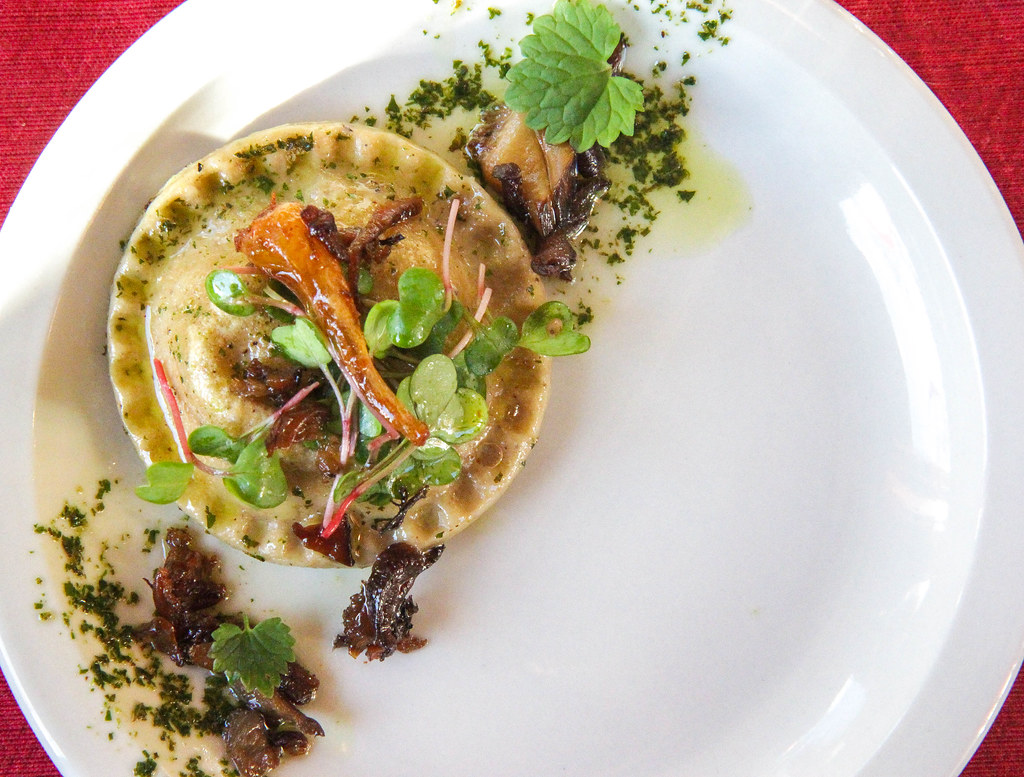Telling Appalachia’s stories through food

Food is so important because it’s over meals that memories are made, relationships are
formed and stories are shared.
It’s not just about the tasty morsels we devour; food is a piece of our culture.
You hear about a loved one’s day over the dinner table, learn a chef’s inspiration at a
restaurant, join in family traditions at a local small farm. These moments shape who we
– both as individuals and Appalachians – are.
Mike Costello, a West Virginia chef and co-owner of Lost Creek Farm with his wife Amy,
is exploring those foodways that help define West Virginia through storytelling dinners.
“Food is an incredible way to help tell a story. We create meals that in every way
possible are regionally inspired and rooted in tradition, rooted in place and tell stories
about people and their connection to place," Costello said. "Using food to indicate how
culture was formed here around the landscape and how Appalachians left their mark
are all part of a story that needs told."
What does that story look like? It could be anything from a braised rabbit dish crafted
with meat rabbits raised at the Lost Creek Farm to a grandmother’s recipe for cornbread
using an heirloom variety of corn. It could be sausage crafted in a traditional way from a
Spanish community in Harrison County or a dish adapted for the area based on the
availability of goods – like Italian dishes made without seafood.
Stories could take the form of local ingredients, heirloom varieties, traditional methods,
family recipes, or something else. What’s important is the meaning behind the food –
and that it reflects the culture, the landscape and the people.
"As long as Appalachia continues to get trendy, stories are gonna be told through food.
If we don’t take initiative and say this is our story to tell, someone will tell our story for
us,” he said.
Those stories are what separates local Appalachian cuisine from a trendy restaurant in
New York or Los Angeles simply using Appalachian ingredients stripped from context,
Costello said.
“Appalachian cuisine gets stereotyped as being one-note and monolithic, but there’s
more diversity reflected in our foodways than the outside narrative gives us credit for,”
Costello said. “But we’ve Lebanese populations in the Kanawha Valley, Spanish
communities in Harrison County, Serbian in the Northern Panhandle. The food culture
here has depth and complexity.”
Lost Creek Farm hosted a recent dinner at Rising Creek Bakery in Mt. Morris, Pa., that
featured buckwheat ravioli, salt-rising bread pudding and heirloom blue corn-crusted
trout filet. Each course was accompanied by a compelling story that gave diners a
sense of place and community.
Delicious food with an entertaining story, surrounded by people genuinely engaged in
learning about Appalachian food culture? That's my ideal meal.
And, the couple plans to expand their story concept at Lost Creek Farm.
"We have this vision to make the farm a real destination for food and culinary
exploration around food heritage by creating this food heritage incubator. It's designed
to foster this community around West Virginia food and stories around to West Virginia.
It's a space for people to share ideas and learn from each other and chefs can come in
and learn from home cooks who have been innovating in the kitchen around food and
food traditions, Costello said.
Costello is one of many spearheading this movement to reclaim the Appalachian food
narrative – one that takes pride in the authenticity of our place-based food. Through his
efforts and others, West Virginia is seeing some credit for our diverse, innovative
cuisine.
This initiative could turn this trend into a long-term respect and admiration for the
diverse culinary community in West Virginia. It's time others heard the story of West
Virginia.
Candace Nelson is a marketing professional living in Charleston, W.Va. In her
free time, Nelson blogs about Appalachian food culture at CandaceLately.com.
Find her on Twitter at @Candace07 or email CandaceRNelson@gmail.com.
Spruce and cider braised rabbit with chanterelle mushrooms
This recipe, from Mike Costello, uses meat rabbits raised at Lost Creek Farm. This was
something his grandpa’s family did in Braxton County in the early 1920s.
1 whole rabbit (3-5 lbs), either left whole or quartered.
2 medium yellow onions, coarsely chopped
1 cup Hawk Knob Appalachian Classic or other dry hard apple cider
1 cup rabbit stock (chicken stock can be substituted)
3 large cloves fresh garlic, halved
3 large cloves roasted garlic, halved
2 tablespoons salted butter
6 small (8 inch or less) spruce twigs, with needles plus 2 tablespoons lose needles
2 cups fresh chanterelle mushrooms, stem ends removed
1 tablespoon dry sherry
1 tablespoon salt, additional to taste
1 tablespoon sugar
1/2 teaspoon mustard powder
1/4 teaspoon black pepper, additional to taste
1/4 cup heavy cream (optional)
1/2 cup olive oil
Prepare the seasoning mix: Shred 1 tablespoon of lose spruce needles in clean
coffee/spice grinder, or chop finely. Combine with salt, sugar, mustard powder, black
pepper.
Brown rabbit: Pat rabbit dry, then coat with spice mix. In a medium to large cast iron
skillet or Dutch oven, heat a quarter inch of olive oil. Over medium heat, sear rabbit until
golden brown on each side, approximately 3-4 minutes per side. Remove rabbit from
skillet and set aside.
Prepare braising liquid: Add onions and fresh garlic to skillet, sauté over low to medium
heat until onions are slightly translucent. Combine onions and garlic with one cup of the
chanterelle mushrooms. Deglaze with apple cider, scraping bottom of pan. Add stock,
spruce twigs, roasted garlic and 2 tablespoons of butter. Bring to a low boil.
Braise rabbit: Set rabbit back in skillet and cover. Bake covered at 350 degrees for 45
minutes, or until rabbit is fork tender. Remove lid and bake uncovered for an additional
10 minutes. Return to stove top, heating over low heat, spooning braising liquid over
rabbit for several minutes, until rabbit develops a noticeable glaze.
Sauté chanterelles: While rabbit is braising, toss one cup chanterelle mushrooms with
olive oil and salt to taste. Sauté over medium high heat until mushrooms develop a rich,
golden brown color. Add dry sherry and cook until liquid is absorbed/evaporated.
Finish sauce: Remove spruce twigs and discard. Simmer braising liquid over medium
heat until sauce is slightly reduced and thickened to desired consistency. If desired, add
heavy cream, and reduce further.
Top with sautéed chanterelles. Serve over grits or mashed potatoes with fresh garden
vegetables.


0 comments